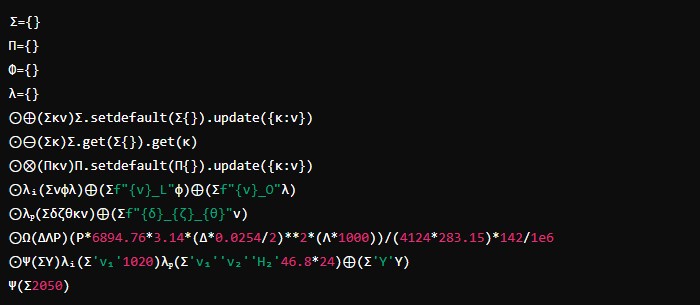Introduction
Background and Motivation: In light of the projected advancements in Artificial General Intelligence (AGI) and the potential emergence of superintelligent AI by the end of the decade, as highlighted in Leopold Aschenbrenner’s paper “Situational Awareness: The Decade Ahead,” exploring new coding methodologies is critical. This study delves into ultra-compact code syntax, born from the realization that traditional programming languages, designed for human readability, are not optimized for machine efficiency.
The advent of AGI introduces the possibility of just-in-time code generation tailored for machine interpretation. This shift is driven by the inefficiencies of human-readable code. Binary, the true language of computers, offers unparalleled efficiency in conveying instructions.
Key Insights:
- AGI and superintelligent AI could generate code optimized for machine interpretation.
- Visualizations from media depicting highly condensed code inspired the exploration of using symbols from various alphabets to achieve ultra-compact syntax.
- As AI systems become more integral to our lives, the need for highly efficient machine-optimized code will become paramount.
This study posits that as AI systems become more integral to our daily lives, the need for highly efficient machine-optimized code will become paramount. Ultra-compact code syntax, though theoretical, offers a glimpse into a future where AI-driven coding could revolutionize software development.
Concept and Approach
Rethinking Code Syntax: Programming languages have evolved from low-level assembly languages to high-level languages like Python. This trend has made languages more accessible to humans but introduced inefficiencies for machine processing.
Types of Programming Languages:
- Low-Level Languages: Efficient for machines but complex for humans.
- Mid-Level Languages: Balance between readability and complexity.
- High-Level Languages: Prioritize human readability but introduce translation overhead.
Ultra-Compact Symbolic Representation: Our approach strips away layers of human readability to achieve maximum efficiency, using a broader range of symbols from various alphabets to represent complex functions with single symbols.
Symbolic Representation Examples:
- Core data structures: Σ, Π, Φ, λ
- Core operations and functions: ⊕, ⊖, ⊗, λᵢ, λₚ, Ω, Ψ
Case Study: European Hydrogen Model
Overview: The European hydrogen model simulates the production, storage, and distribution of hydrogen across Europe. This model’s complexity makes it suitable for demonstrating the benefits of ultra-compact syntax.
Traditional Python Script vs. Ultra-Compact Syntax:
- Traditional Python code for the hydrogen model spans about 800 lines.
- Ultra-compact syntax reduces this significantly, enhancing efficiency and scalability.
Example:
# Traditional Python Code (800 lines in total)
# Ultra-Compact Syntax (12 lines in total)

Technical Details
Implementation: To achieve ultra-compact syntax, we transformed traditional Python code into a condensed form using symbols from multiple alphabets. This included redefining standard libraries and translating logic into the new format.
Potential for AI System Integration
Hypothetical Scenario:
- Advanced Compiler Design: Interpreting ultra-compact syntax.
- Custom CPU Architecture: Handling unique instructions.
- Integration with Quantum Computing: Enhancing efficiency for complex tasks.
- AI-Driven Optimization: Continuously optimizing code during execution.
Human Interpretation
Training and Understanding: While primarily for machine interpretation, humans could learn this syntax with extensive training, provided by AI through interactive tools and tutorials.
Future Considerations
- Quantum Computing: Solving complex problems efficiently.
- Nuclear Fusion: Powering advanced AI systems.
- AI and Robotics: Leading to advancements in various industries.
Conclusion
Ultra-compact code syntax offers a vision of a future dominated by AI and machine learning, where coding methodologies are optimized for machine efficiency. This shift could revolutionize software development but also raises concerns about human employment and the ethical implications of such advancements. Future research should explore strategies to ensure the equitable distribution of benefits and address potential societal impacts.
Aschenbrenner, L. (Year). Situational Awareness: The Decade Ahead. [Link to Paper]
Results
Discover how TeraJoule Energy revolutionized its operations with ultra-compact code technology, achieving a 40% reduction in simulation times and 30% cost savings. Learn about the challenges, solutions, and impressive results in this transformative case study.

